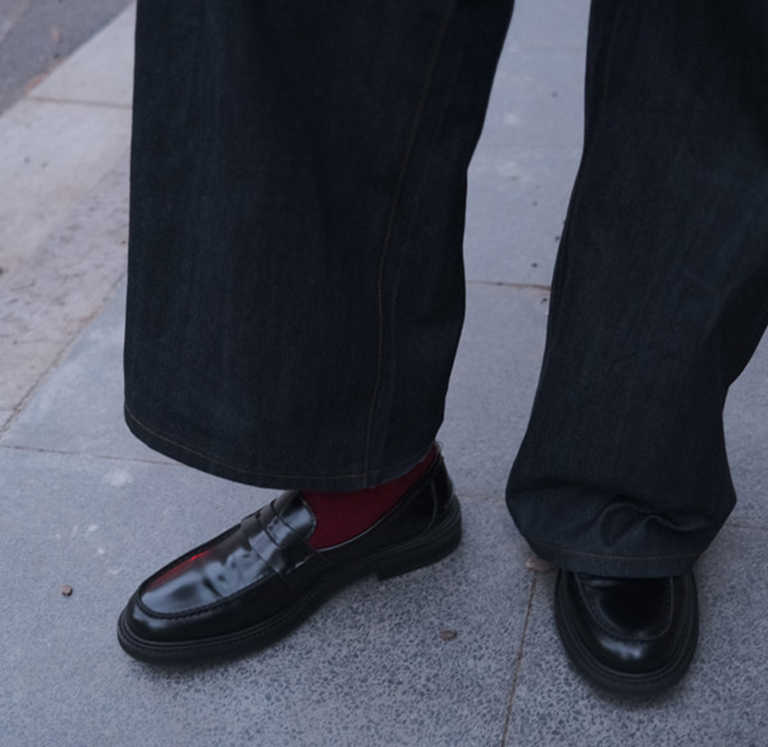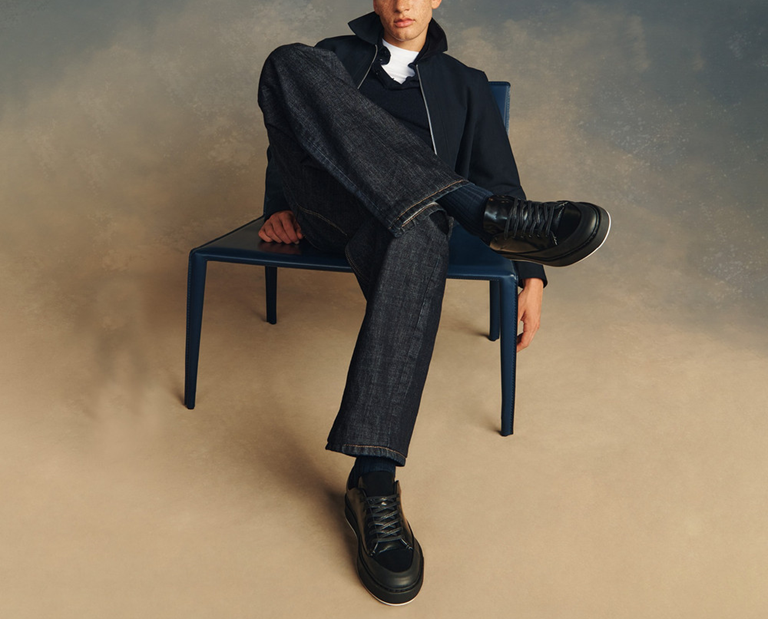Contents
Ever wrapped up a long day and felt like your feet did twice the hours you did, even though you barely left your desk or the shop floor. The right shoes change how you stand, how you walk, and even how you focus, so a smart rotation pays you back every single week.
Work throws different tasks at you, from quick client calls to warehouse checks to a late train sprint, and one pair cannot cover all of it without tradeoffs. Build a small lineup that gives you comfort, grip, polish, and easy care, and you will feel the difference the moment you step out the door.
What Are the Best Men’s Work Shoes?
Your best lineup balances dress codes, walking distance, and the surfaces you cover each day, then adds in fit and maintenance you can keep up with. You get more done when your feet feel good, so focus on comfy and long-lasting men’s work shoes that hold support through the months instead of fading after a few commutes.
Chelsea Boots
Chelsea boots pull double duty in most offices and they handle weekend plans without looking out of place, which makes them a strong anchor in your rotation of men’s office shoes. Go for smooth leather if you wear suits, or pick a waxed or pebbled leather for trousers and dark denim days. Elastic gussets and pull tabs speed up mornings, and a tapered toe reads sharper under slim or straight legs. Choose a rubber outsole for wet sidewalks and lifts around 20–30 mm for a little posture boost without foot strain.
Comfort starts with the insole and midsole, so look for a cushioned footbed you can remove and air out after long days. If you walk a lot, a rubber or hybrid leather outsole grips tile and pavement better than slick leather.
Fit matters more than any spec sheet, so measure both feet and try them late in the day when your feet have a bit of swell. You should feel light pressure across the instep from the gussets without pinching, and about a thumb’s width at the toe. If you work in the rain, add a water-repellent spray and keep a shoe horn at your desk to protect the heel cup during quick changes.
Penny Loafers

Penny loafers are easy to put on and off, which helps when your schedule jumps from desk time to meeting rooms to lunch across town. Pick a low-profile pair for suits or a beefroll style for a slightly chunkier look with chinos and knit polos. Full-grain leather lasts longer than thin corrected leather, and it breaks in cleaner, so you avoid hot spots in the first week. If you walk on smooth floors a lot, a rubber or micro sole adds grip without bulking up the shape.
Aim for a snug fit at the heel so you do not slip with every step, then check that the strap does not press hard on the top of your foot. A cushioned insole helps on long days, and you can swap in a supportive insert if you need more arch help. Keep cedar shoe trees inside after work to manage moisture and keep their shape. For summer comfort, pair them with thin merino socks that breathe well and handle odour better than cotton.
Chukka Boots
Chukkas sit in the sweet spot between dressy and casual, so they handle a wide range of offices without fuss. Two or three eyelets keep the look clean and speed up lacing on busy mornings. Suede pairs feel soft and flexible from day one, and a light brush brings them back after a dusty walk. If you need more weather resistance, nubuck or smooth leather holds up to drizzle once you add a spray.
Comfort comes from the base, so seek a crepe or rubber outsole if you stand or walk a lot, and a foam midsole for shock absorption. Heel height around 20–30 mm gives support without tipping your stride forward. A lined collar reduces rubbing at the ankle on longer days. If your feet run hot, look for textile linings that wick moisture so you end the day drier.
Chukkas pair well with wool trousers, chinos, and dark jeans, which stretches your wardrobe without stress. Stick to dark brown or tan for most outfits, and keep black in reserve for stricter dress codes. Use a shoe horn to protect the heel, brush suede with a crepe brush, and rotate with another pair midweek so the footbed dries out fully. When the sole wears down, resole or add a thin protector to squeeze out more kilometres.
Black Sneakers

Not every workplace needs a dress shoe every day, and a clean black leather sneaker covers busy commutes and long office hallways while still looking sharp. Choose a low-profile silhouette with minimal stitching and a small logo so you stay under the radar in meetings. A padded collar and a cushioned midsole help you handle 8,000 to 10,000 steps without sore arches. If your building has slick tile, a patterned rubber outsole gives a steady grip and keeps your gait smooth.
Fit them like an everyday trainer, with about a thumb’s width at the toe and no heel lift while you walk. If you stand for long shifts, seek an insole with a real arch shape instead of a flat foam slab. Leather uppers wipe clean with a damp cloth, and a weekly conditioner keeps creases from drying out. For fresh air inside the shoe, look for a breathable lining and perforations near the toe box.
Monk Strap Shoes
Monk straps give you a sharp look without laces, which saves time and adds a bit of character in the boardroom. Single straps read sleek and minimal, while double straps lean a touch bolder for business casual suits and crisp trousers. Choose full-grain leather for durability and shape retention, and check that the strap hardware feels solid when you fasten it. A slightly squared or almond toe works with most wardrobes and keeps the profile modern.
Comfort starts with a stable heel and a supportive footbed, so try them on late in the day and walk a few minutes to test pressure points. You want a firm hold over the instep with room for your toes to wiggle a little. If you move a lot between buildings, a rubber outsole or a leather sole with a rubber insert grips wet sidewalks better than smooth leather. A heel around 25 mm supports posture without fatigue.

